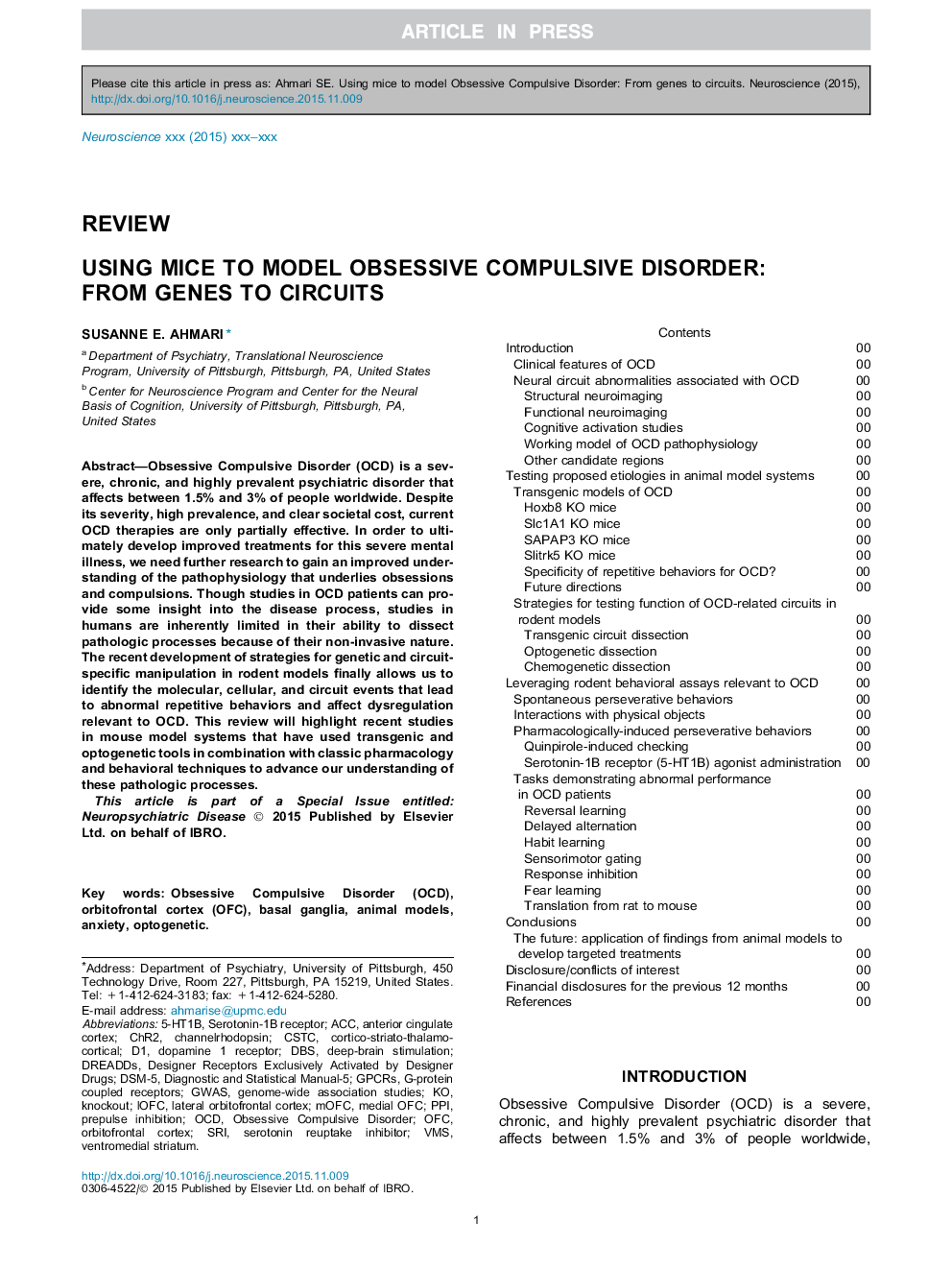| کد مقاله | کد نشریه | سال انتشار | مقاله انگلیسی | نسخه تمام متن |
|---|---|---|---|---|
| 6271160 | 1614755 | 2016 | 17 صفحه PDF | دانلود رایگان |
عنوان انگلیسی مقاله ISI
Using mice to model Obsessive Compulsive Disorder: From genes to circuits
ترجمه فارسی عنوان
با استفاده از موش ها به منظور مدل اختلال وسواسی اجباری: از ژن ها به مدار
دانلود مقاله + سفارش ترجمه
دانلود مقاله ISI انگلیسی
رایگان برای ایرانیان
کلمات کلیدی
DBSventromedial striatumdopamine 1 receptorOrbitofrontal cortex (OFC)OCDcortico-striato-thalamo-corticalCSTCDSM-5ChannelrhodopsinlOFC5-HT1BmOFCChR2OFCACCPPIGPCRsVMSSRIDREADDs - DREADD هاG-protein coupled receptors - G-پروتئین گیرنده های متصل شدهObsessive compulsive disorder - اختلال وسواس فکریObsessive compulsive disorder (OCD) - اختلال وسواسی اجباری (OCD)Anxiety - اضطرابOptogenetic - اپتوژنیکserotonin reuptake inhibitor - بازدارنده بازدارنده سروتونینdeep-brain stimulation - تحریک مغزی عمیقbasal ganglia - عقدههای قاعدهایlateral orbitofrontal cortex - قشر اوربیتوفرناتال جانبیorbitofrontal cortex - قشر اوربیتوفرنتالanterior cingulate cortex - قشر سینگولیت قدامی، کورتکس سینگولیت قدامیAnimal models - مدل های حیوانیGenome-wide association studies - مطالعات مرتبط با ژنومGWAS - مطالعهٔ همخوانی سراسر ژنومPrepulse inhibition - مهار پیش قاعدگیknockout - ناکاوتdesigner receptors exclusively activated by designer drugs - گیرنده های طراح که به طور خاص توسط داروهای طراح فعال می شوند
موضوعات مرتبط
علوم زیستی و بیوفناوری
علم عصب شناسی
علوم اعصاب (عمومی)
چکیده انگلیسی
Obsessive Compulsive Disorder (OCD) is a severe, chronic, and highly prevalent psychiatric disorder that affects between 1.5% and 3% of people worldwide. Despite its severity, high prevalence, and clear societal cost, current OCD therapies are only partially effective. In order to ultimately develop improved treatments for this severe mental illness, we need further research to gain an improved understanding of the pathophysiology that underlies obsessions and compulsions. Though studies in OCD patients can provide some insight into the disease process, studies in humans are inherently limited in their ability to dissect pathologic processes because of their non-invasive nature. The recent development of strategies for genetic and circuit-specific manipulation in rodent models finally allows us to identify the molecular, cellular, and circuit events that lead to abnormal repetitive behaviors and affect dysregulation relevant to OCD. This review will highlight recent studies in mouse model systems that have used transgenic and optogenetic tools in combination with classic pharmacology and behavioral techniques to advance our understanding of these pathologic processes.
ناشر
Database: Elsevier - ScienceDirect (ساینس دایرکت)
Journal: Neuroscience - Volume 321, 3 May 2016, Pages 121-137
Journal: Neuroscience - Volume 321, 3 May 2016, Pages 121-137
نویسندگان
Susanne E. Ahmari,
